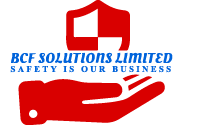Overview:
The healthcare industry is a critical sector where high levels of security and management solutions are requisite not just to protect assets and data but also to ensure the safety and well-being of patients and staff. From securing premises to managing staff and patient data, technology plays a pivotal role. Let’s delve into the applications of various security and management systems in healthcare:
Fiber Optic Solutions
- Secure Data Transmission: Transmitting patient data, medical records, and other sensitive information through fiber optic cables ensures high-speed and secure data transmission.
- Network Reliability: Ensuring minimal downtime and reliable connectivity which is critical for accessing patient records and facilitating telehealth services.
Biometric Access Control
- Secure Access: Biometric systems provide secure access to restricted areas like operation theaters, labs, and data centers by validating the authorized personnel.
- Authentication: Verifying the identities of staff and sometimes even patients to enhance security.
Time Attendance Systems
- Staff Management: Ensures accurate tracking of working hours, leave, and overtime for healthcare staff.
- Compliance: Helps adhere to labor laws and manage shift work effectively, ensuring no shortages or overlaps.
Cold Chain Monitoring Solutions
- Vaccine Storage: Monitors the temperature and conditions of vaccine storages, ensuring they are kept in optimum conditions.
- Sample Integrity: Ensures that sensitive biological samples are preserved under required conditions.
Anti-Epidemic Solutions
- Disease Control: Automated systems that track and manage disease outbreaks, ensuring timely interventions.
- Data Analysis: Analysing patient data to identify potential outbreaks or to manage ongoing epidemic situations.
Payroll Solutions
- Compensation Management: Automates salary calculations, deductions, and disbursements for healthcare staff.
- Compliance Management: Ensures adherence to tax laws and other statutory compliances related to compensation.
CCTV Systems
- Surveillance: Monitors areas like hallways, entry/exit points, and public areas to enhance security and patient safety.
- Incident Recording: Records incidents which can be used for investigative purposes.
Turnstiles and Scanners
- Access Control: Regulates entry into restricted zones.
- Visitor Management: Manages and tracks visitors to prevent unauthorized access.
Barriers and Bollards
- Perimeter Security: Prevents unauthorized vehicle access and protects the premises.
- Safety: Provides a safe pedestrian environment.
Gates and Gate Operators
- Controlled Access: Ensures only authorized individuals and vehicles can enter the premises.
- Emergency Management: Enables quick access/exit during emergencies.
Visitor Management Solutions
- Tracking: Keeps tabs on all visitors, enhancing security and minimizing potential risks.
- Health Screenings: Can integrate health screening procedures for visitors during pandemics.
Android Biometrics
- Mobile Access: Allows healthcare professionals secure access to systems and data directly from mobile devices.
- Remote Authentication: Facilitates remote work and telehealth services by authenticating users through mobile biometrics.
IP Telephony
- Communication: Enables robust and secure communication within the healthcare facility.
- Remote Consultations: Facilitates telehealth consultations and remote patient care.
Alarm Systems
- Emergency Alerts: Provides immediate alerts during medical or security emergencies.
- Monitoring: Monitors critical parameters and notifies relevant personnel in case of deviations.
Intercom Solutions
- Secure Communication: Facilitates secure and effective communication between different departments or sections of the healthcare facility.
- Emergency Announcements: Enables quick broadcasting of messages during emergencies.
Networking Infrastructure
- Data Management: Facilitates secure data storage, access, and transfer within healthcare facilities.
- Telemedicine: Supports telemedicine services with robust connectivity and data handling capabilities.
Desktops and Laptops
- Data Access: Enables access to patient records, diagnostic data, and other vital information.
- Research: Facilitates research, study, and administrative tasks for healthcare professionals.
In a nutshell, these technologies and systems significantly boost the security and operational efficiency of healthcare facilities, ensuring a safe, secure, and functional environment for patients and healthcare providers. Tailoring these solutions to fit the specific needs and challenges of healthcare establishments enhances their efficacy and relevance to the industry.
Top of Form
